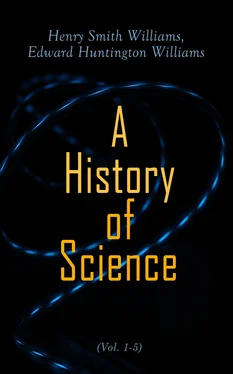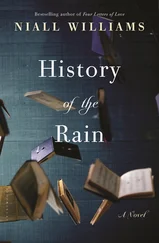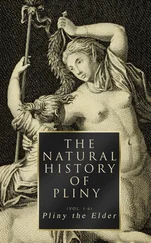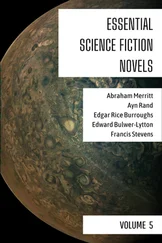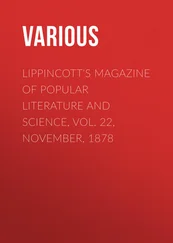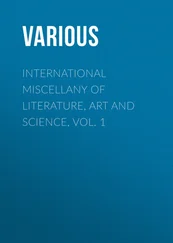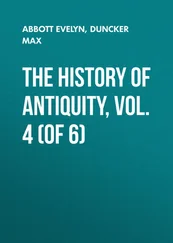4 (p. 90). E. A. Wallace Budge's First Steps in Egyptian, London, 1895, is an excellent elementary work on the Egyptian writing. Professor Erman's Egyptian Grammar, London, 1894, is the work of perhaps the foremost living Egyptologist.
5 (P. 93). Extant examples of Babylonian and Assyrian writing give opportunity to compare earlier and later systems, so the fact of evolution from the pictorial to the phonetic system rests on something more than mere theory.
6 (p. 96). Friedrich Delitzsch, Assyrischc Lesestucke mit grammatischen Tabellen und vollstdndigem Glossar einfiihrung in die assyrische und babylonische Keilschrift-litteratur bis hinauf zu Hammurabi, Leipzig, 1900.
7 (p. 97). It does not appear that the Babylonians thcmselves ever gave up the old system of writing, so long as they retained political autonomy.
8 (p. 101). See Isaac Taylor's History of the Alphabet; an Account of the origin and Development of Letters, new edition, 2 vols., London, 1899.
For facsimiles of the various scripts, see Henry Smith Williams' History of the Art Of Writing, 4 vols, New York and London, 1902–1903.
CHAPTER V. THE BEGINNINGS OF GREEK SCIENCE
Table of Contents
1 (p. III). Anaximander, as recorded by Plutarch, vol. VIII-. See Arthur Fairbanks'First Philosophers of Greece: an Edition and Translation of the Remaining Fragments of the Pre-Socratic Philosophers, together with a Translation of the more Important Accounts of their Opinions Contained in the Early Epitomcs of their Works, London, 1898. This highly scholarly and extremely useful book contains the Greek text as well as translations.
CHAPTER VI. THE EARLY GREEK PHILOSOPHERS IN ITALY
Table of Contents
1 (p. 117). George Henry Lewes, A Biographical History of Philosophy from its Origin in Greece down to the Present Day, enlarged edition, New York, 1888, p. 17.
2 (p. 121). Diogenes Laertius, The Lives and Opinions of Eminent Philosophers, C. D. Yonge's translation, London, 1853, VIII., p. 153.
3 (p. 121). Alexander, Successions of Philosophers.
4 (p. 122). "All over its centre." Presumably this is intended to refer to the entire equatorial region.
5 (p. 125). Laertius, op. cit., pp. 348–351.
6 (p. 128). Arthur Fairbanks, The First Philosophers of Greece London, 1898, pp. 67–717.
7 (p. 129). Ibid., p. 838.
8 (p. 130). Ibid., p. 109.
9 (p. 130). Heinrich Ritter, The History of Ancient Philosophy, translated from the German by A. J. W. Morrison, 4 vols., London, 1838, vol, I., p. 463.
10 (p. 131). Ibid., p. 465.
11 (p. 132). George Henry Lewes, op. cit., p. 81.
12 (p. 135). Fairbanks, op. cit., p. 201.
13 (p. 136). Ibid., P. 234.
14 (p. 137). Ibid., p. 189.
15 (p. 137). Ibid., P. 220.
16 (p. 138). Ibid., p. 189.
17 (p. 138). Ibid., p. 191.
CHAPTER VII. GREEK SCIENCE IN THE EARLY ATTIC PERIOD
Table of Contents
1 (p. 150). Theodor Gomperz, Greek Thinkers: a History of Ancient Philosophy (translated from the German by Laurie Magnes), New York, 190 1, pp. 220, 221.
2 (p. 153). Aristotle's Treatise on Respiration, ch. ii.
3 (p. 159). Fairbanks' translation of the fragments of Anaxagoras, in The First Philosophers of Greece, pp. 239–243.
CHAPTER VIII. POST-SOCRATIC SCIENCE AT ATHENS
Table of Contents
1 (p. 180). Alfred William Bern, The Philosophy of Greece Considered in Relation to the Character and History of its People, London, 1898, p. 186.
2 (p. 183). Aristotle, quoted in William Whewell's History of the Inductive Sciences (second edition, London, 1847), Vol. II., p. 161.
CHAPTER IX. GREEK SCIENCE OF THE ALEXANDRIAN OR HELLENISTIC PERIOD
Table of Contents
1 (p. 195). Tertullian's Apologeticus.
2 (p. 205). We quote the quaint old translation of North, printed in 1657.
CHAPTER X. SCIENCE OF THE ROMAN PERIOD
Table of Contents
1 (p. 258). The Geography of Strabo, translated by H. C. Hamilton and W. Falconer, 3 vols., London, 1857, Vol. I, pp. 19, 20.
2 (p. 260). Ibid., p. 154.
3 (p. 263). Ibid., pp. 169, 170.
4 (p. 264) Ibid., pp. 166, 167.
5 (p. 271). K. 0. Miller and John W. Donaldson, The History of the Literature of Greece, 3 vols., London, Vol. III., p. 268.
6 (p. 276). E. T. Withington, Medical History fron., the Earliest Times, London, 1894, p. 118.
7 (p. 281). Ibid.
8 (p. 281). Johann Hermann Bass, History of Medicine, New York, 1889.
CHAPTER XI. A RETROSPECTIVE GLANCE AT CLASSICAL SCIENCE
Table of Contents
(p. 298). Dion Cassius, as preserved by Xiphilinus. Our extract is quoted from the translation given in The Historians' History of the World (edited by Henry Smith Williams), 25 vols., London and New York, 1904, Vol. VI., p. 297 ff.
(For further bibliographical notes, the reader is referred to the Appendix of volume V.)
Table of Contents Table of Contents Volume 1 Volume 1 Table of Contents Volume 2 Volume 2 Table of Contents Volume 3 Volume 4 Volume 5
BOOK II. THE BEGINNINGS OF MODERN SCIENCE
I. SCIENCE IN THE DARK AGE
II. MEDIAEVAL SCIENCE AMONG THE ARABIANS
III. MEDIAEVAL SCIENCE IN THE WEST
IV. THE NEW COSMOLOGY—COPERNICUS TO KEPLER AND GALILEO
V. GALILEO AND THE NEW PHYSICS
VI. TWO PSEUDO-SCIENCES—ALCHEMY AND ASTROLOGY
VII. FROM PARACELSUS TO HARVEY
VIII. MEDICINE IN THE SIXTEENTH AND SEVENTEENTH CENTURIES
IX. PHILOSOPHER-SCIENTISTS AND NEW INSTITUTIONS OF LEARNING
X. THE SUCCESSORS OF GALILEO IN PHYSICAL SCIENCE
XI. NEWTON AND THE COMPOSITION OF LIGHT
XII. NEWTON AND THE LAW OF GRAVITATION
XIII. INSTRUMENTS OF PRECISION IN THE AGE OF NEWTON
XIV. PROGRESS IN ELECTRICITY FROM GILBERT AND VON GUERICKE TO FRANKLIN
XV. NATURAL HISTORY TO THE TIME OF LINNAEUS
APPENDIX REFERENCE LIST
CHAPTER I SCIENCE IN THE DARK AGE
CHAPTER III MEDIAEVAL SCIENCE IN THE WEST
CHAPTER IV THE NEW COSMOLOGY—COPERNICUS TO KEPLER AND GALILEO
CHAPTER V
CHAPTER VI TWO PSEUDO-SCIENCES—ALCHEMY AND ASTROLOGY
CHAPTER VII FROM PARACELSUS TO HARVEY
CHAPTER VIII MEDICINE IN THE SIXTEENTH AND SEVENTEENTH CENTURIES
CHAPTER IX PHILOSOPHER-SCIENTISTS AND NEW INSTITUTIONS OF LEARNING
CHAPTER X THE SUCCESSORS OF GALILEO IN PHYSICAL SCIENCE
CHAPTER XI NEWTON AND THE COMPOSITION OF LIGHT
CHAPTER XII NEWTON AND THE LAW OF GRAVITATION
CHAPTER XIV PROGRESS IN ELECTRICITY FROM GILBERT AND VON GUERICKE TO FRANKLIN
BOOK II. THE BEGINNINGS OF MODERN SCIENCE
Table of Contents
The studies of the present book cover the progress of science from the close of the Roman period in the fifth century A.D. to about the middle of the eighteenth century. In tracing the course of events through so long a period, a difficulty becomes prominent which everywhere besets the historian in less degree—a difficulty due to the conflict between the strictly chronological and the topical method of treatment. We must hold as closely as possible to the actual sequence of events, since, as already pointed out, one discovery leads on to another. But, on the other hand, progressive steps are taken contemporaneously in the various fields of science, and if we were to attempt to introduce these in strict chronological order we should lose all sense of topical continuity.
Our method has been to adopt a compromise, following the course of a single science in each great epoch to a convenient stopping-point, and then turning back to bring forward the story of another science. Thus, for example, we tell the story of Copernicus and Galileo, bringing the record of cosmical and mechanical progress down to about the middle of the seventeenth century, before turning back to take up the physiological progress of the fifteenth and sixteenth centuries. Once the latter stream is entered, however, we follow it without interruption to the time of Harvey and his contemporaries in the middle of the seventeenth century, where we leave it to return to the field of mechanics as exploited by the successors of Galileo, who were also the predecessors and contemporaries of Newton.
Читать дальше
